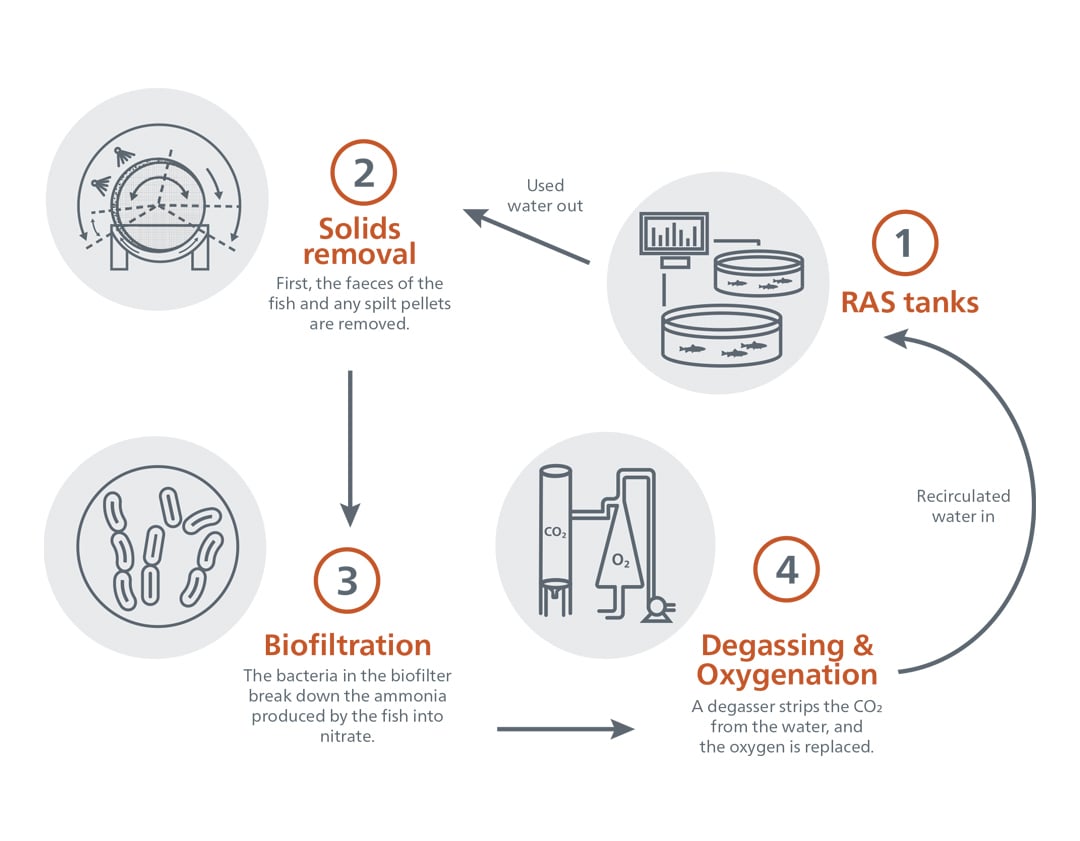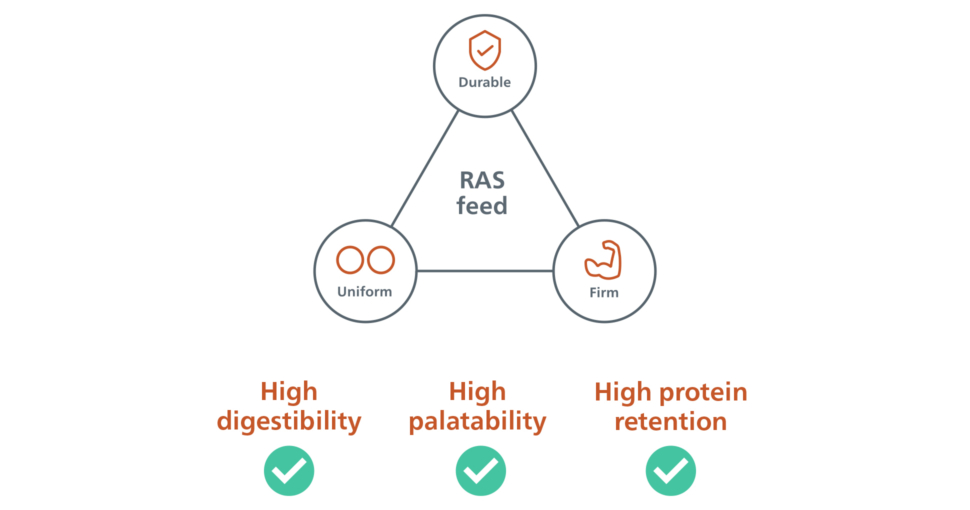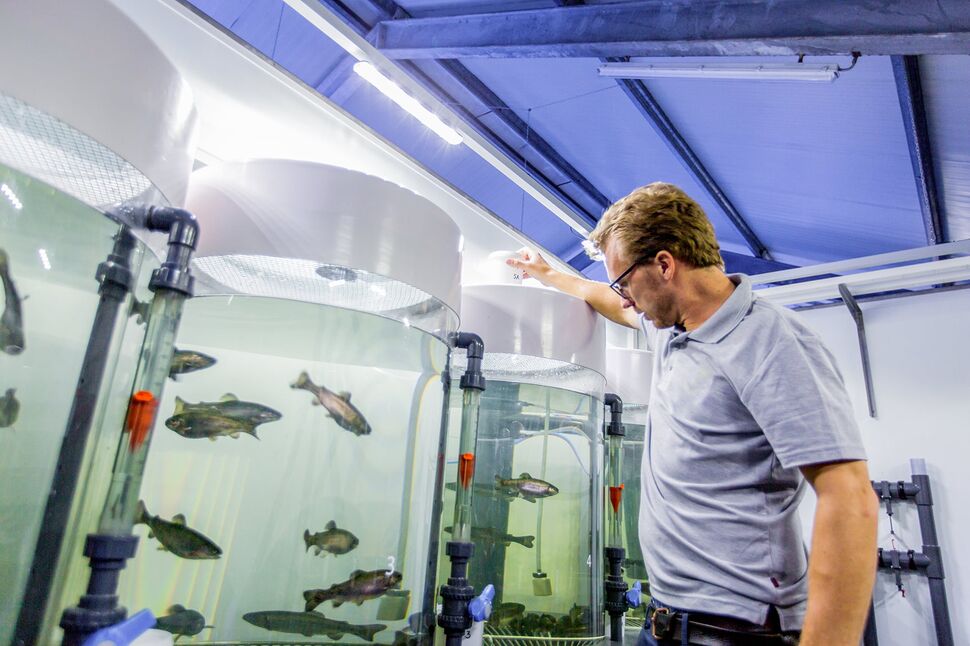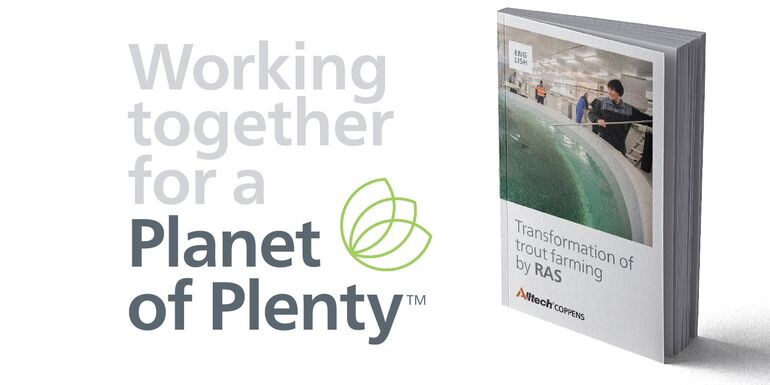
Farming fish in recirculating aquaculture systems (RAS) has several benefits.
They can be built close to the market and in areas that do not have sufficient water or the right climatic conditions for the chosen fish species. Also, the amount of water used in a RAS is far less than in traditional farming, as the water can be reused after the filters have cleaned and reconditioned it.

However, the capital costs are high and skilful farm workers are required to operate a RAS successfully. By optimising all the relevant water parameters, a RAS allows high stocking densities and feed rates and, thus, high growth rates and low FCRs. That is why RAS productivity is exceptionally high compared to other fish farming systems.
The fundamentals of RAS
In RAS, the water parameters can be controlled and optimised at all times. The water is cleaned and reconditioned so that it can be reused. First, the faeces of the fish and any spilt pellets are removed. This is done with a mechanical filter, like a sludge cone and/or a drum filter with a fine sieve. The next step is nitrification, whereby the bacteria in the biofilter break down the ammonia produced by the fish into nitrate, a molecule that is almost harmless to fish. Biofilters can be a moving bed, where bacteria grow on beads, or trickling filters using a fixed bio medium over which the water trickles like a shower. After biological filtration, a degasser strips the CO2 from the water, and the oxygen is replaced. Usually, farmers use liquid oxygen to reach high levels of oxygen in the incoming water. Finally, in some cases, extra units, like UV or ozone, are used to reduce the number of suspended solids and for hygiene reasons. In this way, the essential water quality parameters can be optimised for the fish, ensuring excellent conditions for high growth rate and good fish health.

Management practices
In all types of fish farming, but RAS especially, the water quality is the basis for healthy fish and optimal performance. Fish eat and grow well when the water quality is excellent and consistent. To a great extent, water quality determines the success of the RAS!
Fish performance is affected by several crucial water parameters, such as dissolved oxygen, concentration of carbon dioxide, ammonia levels, nitrite, nitrate, water temperature and pH — all of these influence the fishes’ well-being, health and appetite.
The golden rule for consistent aquaculture farm results is to maintain consistent optimal water quality. Contrary to outdoor farming, where the weather and the seasons play a significant role, a RAS offers the major benefit of being able to create and maintain optimal conditions for the fish.
The water quality affects feed uptake, digestion, growth and waste excretion. Keeping these parameters optimal at all times requires a good understanding of fish behaviour and the dynamics of the filters. When the provided water quality and, especially, oxygen levels are not limiting, the strategy of growth maximisation offers good opportunities for high yearly production and attractive financial results.

Feeds for RAS farming
To fulfil the farm’s full potential, the farmer needs, besides a state-of-the-art RAS system, first-class RAS feeds and a proper feeding strategy for the best results. Being able to maintain a high daily feed rate is obviously what every fish farmer wants. Higher feed intake equals better growth. In Alltech Coppens, we developed a trout RAS guide that offers support to farmers in developing a successful production.
A RAS feed is characterised by high digestibility, leading to minimal amounts of faecal matter, and high protein retention that minimises ammonia excretions so that the filters can work more efficiently. Next to that, high palatability is required for good feed intake and a composition that allows optimal growth. In trout, for example, this means a high-energy feed with a rather low ratio between digestible protein and digestible energy (DP:DE). A true RAS feed makes a big difference for the water quality and final productivity of the farm.
Like always, overfeeding has to be prevented, as it unnecessarily pollutes the water, even in RAS. Therefore, a near satiation feed strategy is generally best, as it results in close to maximum performance with minimal risk of feed spilling. In this way, stable daily feed rates can be achieved, which benefit filter performance as well.
The basis of a good RAS feeds starts with the selection of only high-quality ingredients. Critical selection criteria include protein level, amino acid profile, energy level, fatty acid profile, digestibility and palatability. The ultimate goal is to maximise nutrient utilisation and minimise nutrient losses for optimal fish growth.
A RAS feed should not only satisfy the nutritional needs of fish, but the physical pellet properties should also minimise water pollution. Feed pellets and faeces must be firm and water-stable so that they do not dissolve in the water and can be effectively removed by the mechanical filter. This can usually be checked at the tank outflow.
Feed pellets need to be firm and durable so that they can withstand the friction they are exposed to in feeding and transportation systems. This is essential so that dust generation can be minimised. Fish cannot consume dust; it will pollute the water and irritate the gills. Sinking speed is also important. The pellet should sink slowly so that all fish in the tank have enough time to eat the feed. This helps to distribute the pellets to the whole batch of fish evenly and minimises uneaten pellets and growth differences.

The future of RAS farming
Pollution control and water reuse in RAS make it a very sustainable way of farming fish and has great future potential. The amount of water required in RAS to produce trout or other fish is much lower than in traditional systems.
Although RAS farming has already undergone much intensification and professionalisation, further development will result in an even higher level of sustainability. Proper design and management of RAS, optimum RAS feed quality and correct feeding management are essential for successful and sustainable fish production. In this way, we take proper care of our planet and contribute to a Planet of Plenty™.
To get a better insight into the optimal operation and function of a RAS, it is crucial to know the fundamental requirements. Find out more on www.alltechcoppens.com/ras-guide, where you can request a complete guide on trout farming in RAS.

